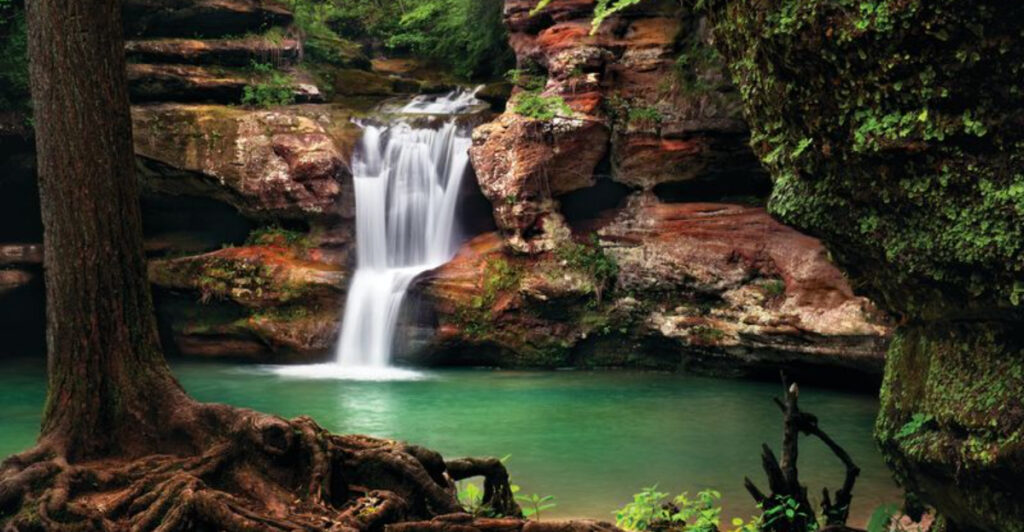While America’s national parks get much of the spotlight, the country’s state parks often fly under the radar—despite offering equally spectacular landscapes, fewer crowds, and just as much adventure. From towering waterfalls and red rock canyons to ancient forests and glacier-carved lakes, these 15 state parks prove that sometimes the best adventures aren’t national at all.
1. Custer State Park – South Dakota
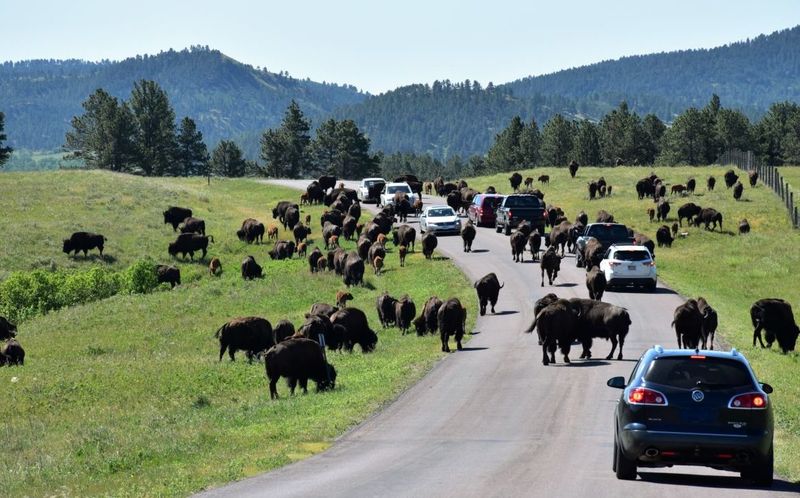
Bison roam freely across rolling prairies while granite spires pierce the sky at this Black Hills treasure. The Needles Highway winds through impossibly narrow tunnels carved into rock formations that seem to defy gravity. Hikers can summit Black Elk Peak, the highest point east of the Rockies, for panoramic views that stretch across four states. Wildlife watching here rivals Yellowstone, with nearly 1,500 bison, pronghorn antelope, mountain goats, and the famous begging burros that approach cars looking for handouts. Sylvan Lake, with its crystal-clear waters surrounded by massive boulders, offers swimming and paddling opportunities during summer months. Fall brings spectacular colors, while winter transforms the landscape into a serene wonderland perfect for snowshoeing adventures.
2. Dead Horse Point State Park – Utah
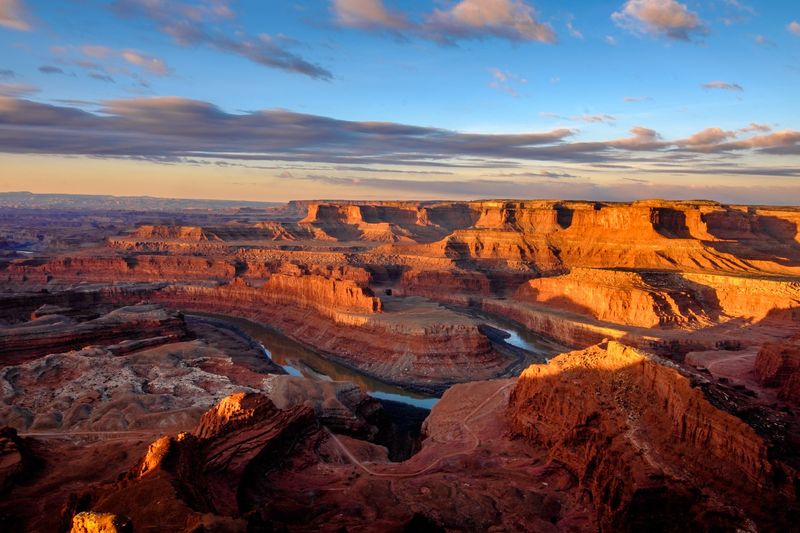
Perched 2,000 feet above a gooseneck bend in the Colorado River, the main overlook offers a jaw-dropping panorama that rivals the Grand Canyon. Sunrise here paints the red rock landscape in fiery hues, while night brings some of the darkest skies in America for spectacular stargazing. Mountain bikers flock to the Intrepid Trail System, where routes like Big Chief and Crossroads deliver technical challenges amid otherworldly scenery. The park sits just 30 minutes from Moab, making it an excellent alternative to the often-crowded Arches and Canyonlands national parks. The bizarre name comes from cowboys who used the narrow neck of land as a natural corral for wild mustangs. Legend says some horses were once abandoned on the point, where they died of thirst within view of the unreachable river below.
3. Hocking Hills State Park – Ohio
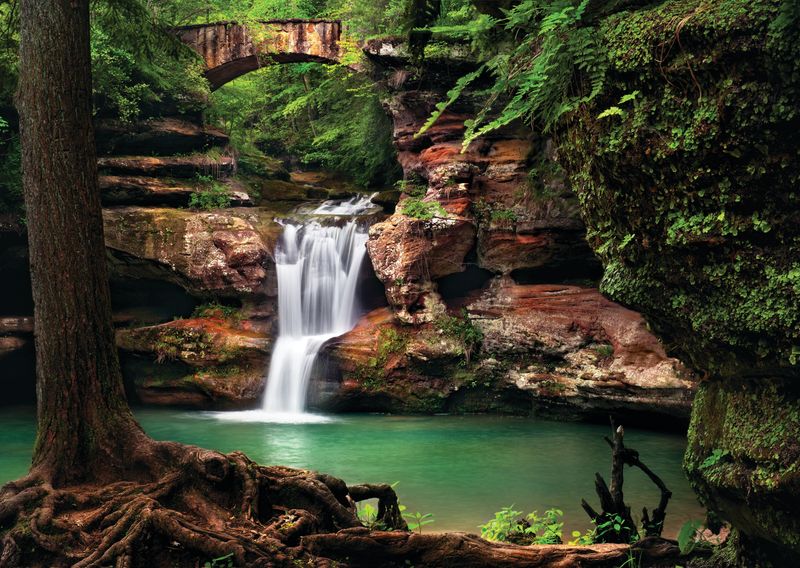
Ancient hemlock forests shroud mysterious sandstone caves and cascading waterfalls in this Appalachian gem. Old Man’s Cave, the park’s most famous feature, feels like stepping into a Lord of the Rings set with its moss-covered cliffs and stone bridges spanning a deep gorge. Cedar Falls thunders down rock shelves into an emerald pool surrounded by towering hemlocks. The massive recess cave at Ash Cave stretches 700 feet across and 100 feet high, creating a natural amphitheater where water trickles from the rim. Winter transforms the park into a frozen wonderland when waterfalls turn to ice columns and icicles hang from cave ceilings. Hiking trails connect the park’s major features, with the six-mile Grandma Gatewood Trail offering the most comprehensive tour of this unexpected Midwestern paradise.
4. Fall Creek Falls State Park – Tennessee
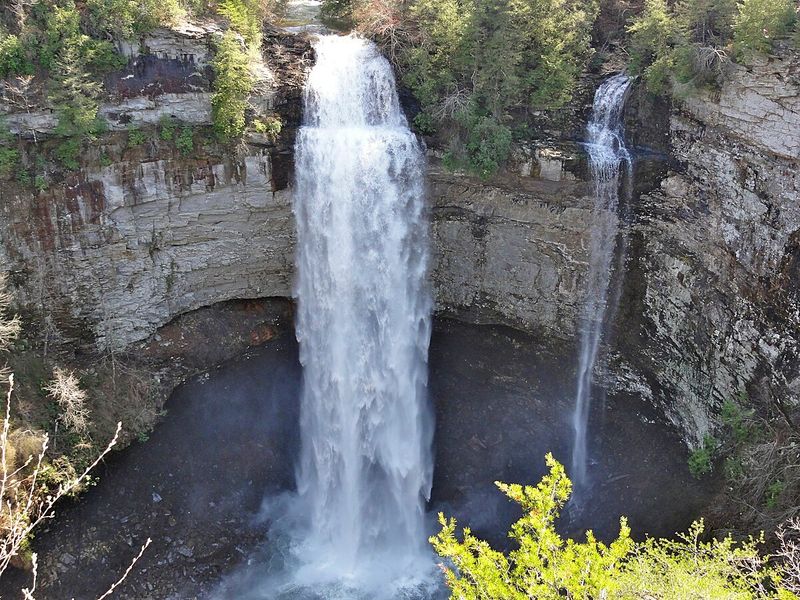
Home to the highest waterfall east of the Mississippi, this sprawling wilderness showcases the raw power of water carving through Tennessee’s Cumberland Plateau. The namesake Fall Creek Falls plunges 256 feet into a rocky gorge, creating misty rainbows on sunny days. Lesser-known cascades like Piney Falls and Cane Creek Falls offer equally impressive displays with smaller crowds. The Woodland Trail weaves through old-growth forest to the base of the falls, where massive boulders and fallen trees create a primeval atmosphere. Beyond waterfalls, the park features limestone sinkholes, virgin hardwood forests, and the scenic Cane Creek Gorge. Adventurous visitors can soar above the canopy on the park’s zipline course or paddle the calm waters of Fall Creek Lake, surrounded by forested hills that burst with color each autumn.
5. Letchworth State Park – New York
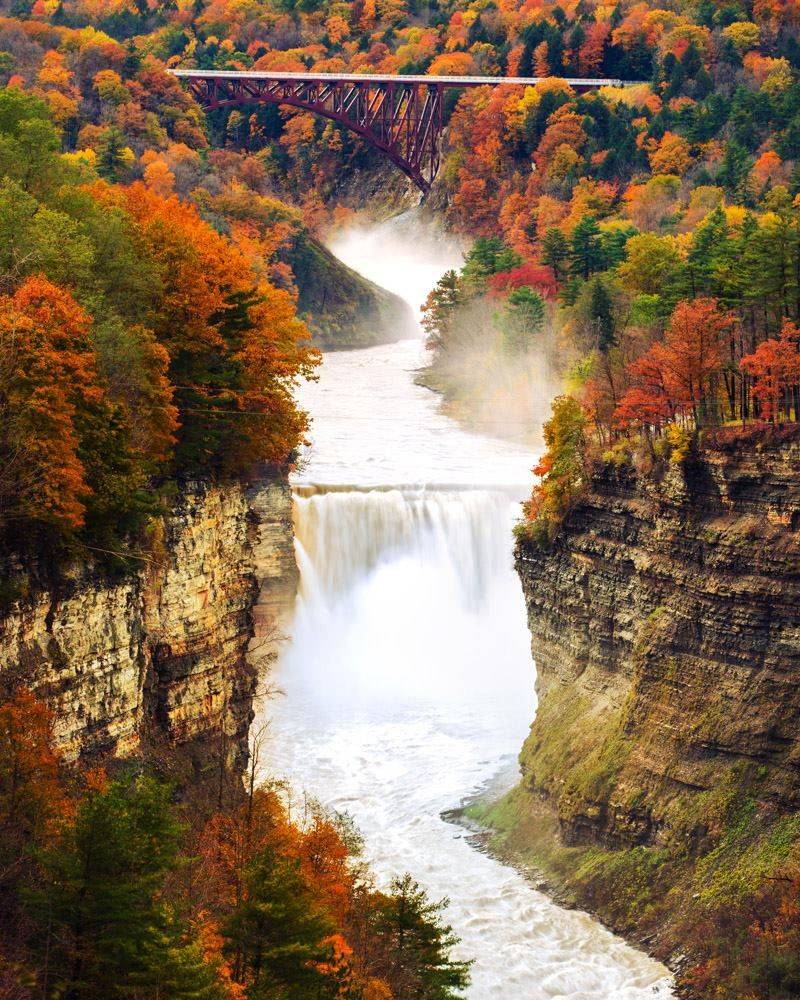
Carved by the persistent flow of the Genesee River, the “Grand Canyon of the East” features three major waterfalls framed by cliffs rising up to 600 feet. The Middle Falls, illuminated at night during summer months, creates a magical display as water thunders 107 feet into the gorge below. Autumn transforms the park into a photographer’s paradise when the dense hardwood forest erupts in crimson, gold, and orange. The historic Glen Iris Inn, once the home of the park’s benefactor William Pryor Letchworth, offers elegant accommodations overlooking Middle Falls. Hot air balloon rides provide a breathtaking aerial perspective of the 17-mile-long gorge. Seventy miles of hiking trails range from easy riverside strolls to challenging climbs up the gorge walls, while whitewater rafters tackle the river’s rapids during spring runoff.
6. Julia Pfeiffer Burns State Park – California
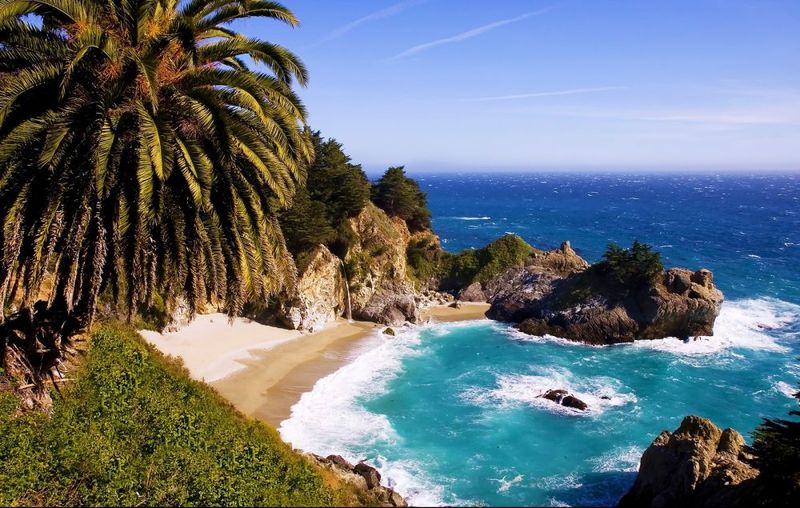
McWay Falls steals the spotlight at this compact Big Sur treasure, where an 80-foot waterfall cascades directly onto a pristine beach in a secluded cove. The turquoise waters and golden sand create a scene so perfect it appears almost artificial. Though you can’t access the beach itself (it’s protected), the Overlook Trail provides the perfect vantage point for photographs. Underwater Partington Cove reveals a hidden tunnel carved through solid rock that leads to a secluded rocky beach where otters often play in the kelp forests. Redwoods and chaparral cover the steep hillsides that plunge dramatically into the Pacific. The park honors Julia Pfeiffer Burns, a pioneering woman who ranched in the area during the late 1800s and early 1900s. Her former ranch property now offers some of California’s most iconic coastal scenery.
7. Chugach State Park – Alaska
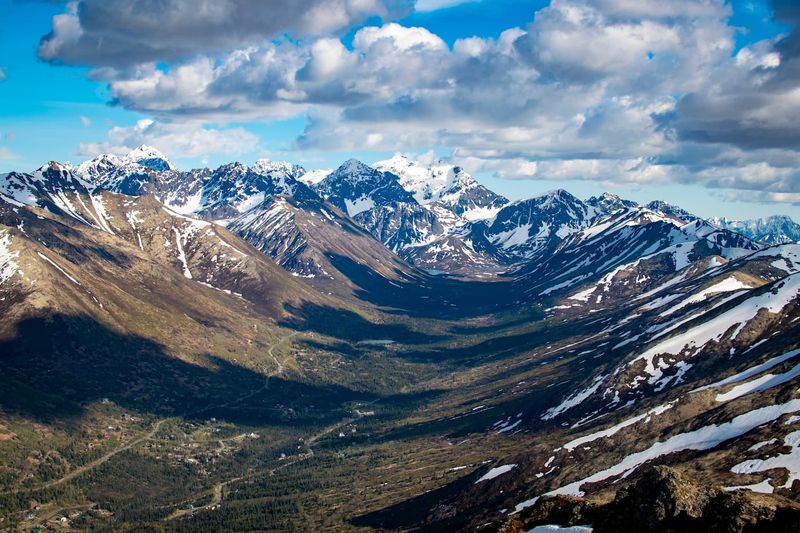
Sprawling across half a million acres just minutes from downtown Anchorage, this wilderness playground offers true Alaskan adventures without remote travel. Jagged peaks, hanging glaciers, and alpine meadows create a backdrop that feels straight out of a National Geographic documentary. Flattop Mountain, the most climbed peak in Alaska, rewards hikers with panoramic views of Cook Inlet, the Alaska Range, and on clear days, even Denali. Wildlife enthusiasts spot moose wading in mountain lakes, Dall sheep clinging to rocky slopes, and occasionally bears foraging for berries. Eagle River Nature Center provides an excellent starting point for exploration, with interpretive displays and ranger programs. Winter transforms the landscape into a snow-covered playground for cross-country skiing, snowshoeing, and fat-tire biking along groomed trails, with northern lights often dancing overhead.
8. Valley of Fire State Park – Nevada
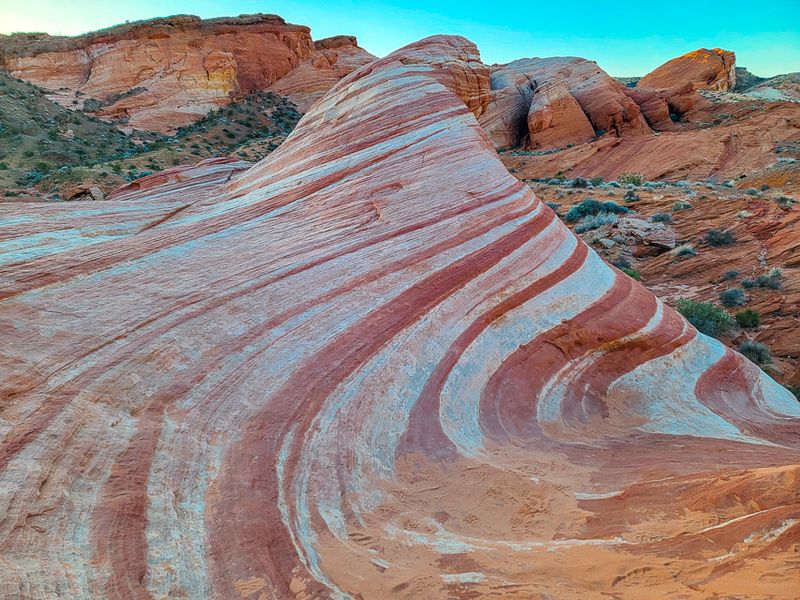
Ancient red sandstone formations glow like flames when sunlight strikes them, giving this desert wonderland its appropriate name. Just an hour from Las Vegas, the landscape feels like stepping onto Mars, with 150-million-year-old formations contorted into impossible shapes. Petroglyphs etched by ancient Puebloan peoples adorn rock walls at Mouse’s Tank and Atlatl Rock, offering glimpses into the area’s 2,000-year human history. The Fire Wave trail leads to a spectacular striped sandstone formation that swirls like candy cane-colored taffy frozen in stone. Slot canyons like Pink Canyon and Fire Cave provide cool respite from the desert heat, their walls glowing with intense color. Spring brings surprising wildflower displays, while desert bighorn sheep navigate the rocky terrain year-round. Photographers flock here at sunrise and sunset when the rocks literally appear to catch fire.
9. Cataract Falls State Recreation Area – Indiana
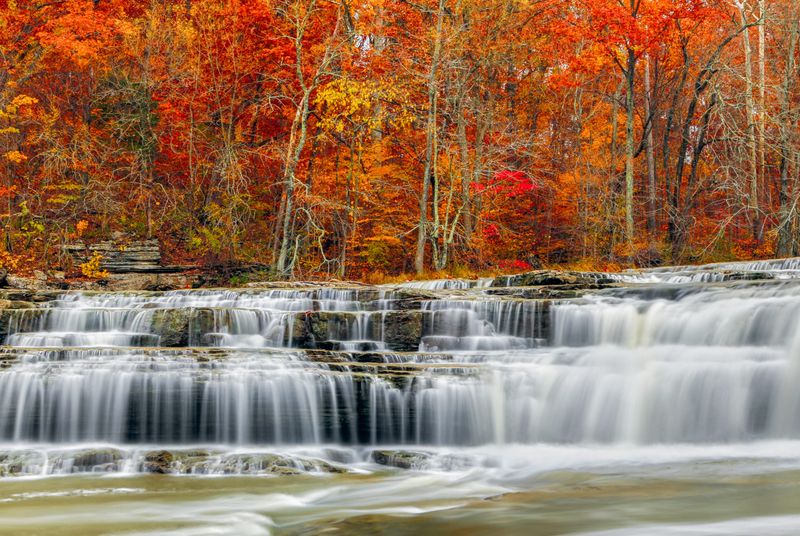
Unexpected waterfalls cascade through a serene hardwood forest in this Midwest hidden gem. Upper and Lower Cataract Falls drop a combined 86 feet, making them Indiana’s largest waterfall system and a refreshing surprise in the state’s generally flat landscape. The historic Cataract Covered Bridge, built in 1876 and recently restored, spans Mill Creek just above the falls, creating a picturesque scene straight from a country painting. Spring wildflowers carpet the forest floor with trillium, bluebells, and mayapples, while autumn transforms the canopy into a kaleidoscope of color. Limestone outcroppings create natural terraces for the falls, with water volume varying dramatically with the seasons. After heavy rains, the normally gentle cascades transform into thundering torrents that demonstrate the powerful force that carved this unique Indiana landscape over thousands of years.
10. Silver Falls State Park – Oregon
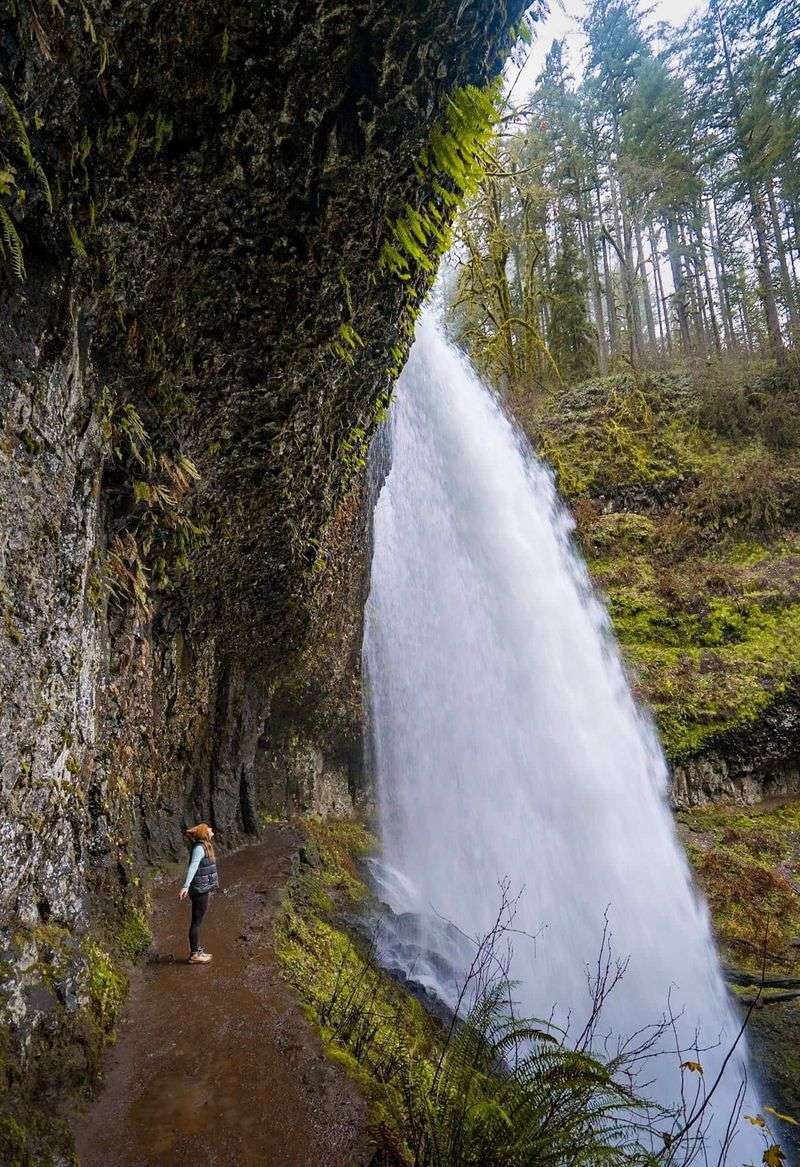
Mossy caverns behind curtains of falling water create a magical experience in Oregon’s “crown jewel” state park. The Trail of Ten Falls loop takes hikers on an 8.7-mile journey past – you guessed it – ten stunning waterfalls, with four allowing visitors to walk behind the cascading sheets of water. South Falls, dropping 177 feet into a misty pool, offers the most dramatic walk-behind experience. Massive old-growth Douglas firs and western hemlocks tower overhead, creating a lush rainforest atmosphere despite being just an hour from Salem. Originally destined to become a national park before being rejected for logging damage, the forest has since recovered magnificently. Winter brings a special quiet beauty when fewer visitors brave the trails, and occasional snow transforms the landscape. The historic South Falls Lodge, built by the Civilian Conservation Corps in the 1930s, houses interpretive exhibits about the park’s natural and cultural history.
11. Franconia Notch State Park – New Hampshire
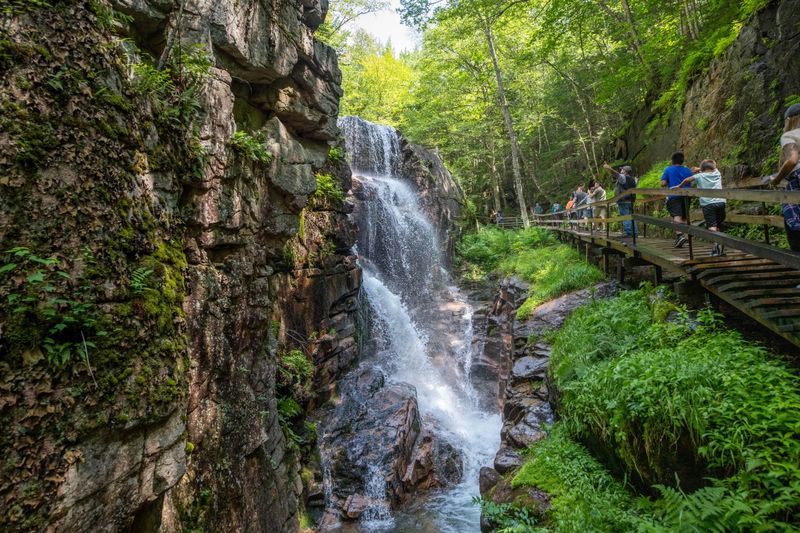
Carved by ancient glaciers, this dramatic mountain pass cuts through the heart of New Hampshire’s White Mountains. The Flume Gorge, a natural granite chasm with walls rising 90 feet straight up, features wooden walkways that allow visitors to experience the power of Avalanche Falls up close. Cannon Mountain’s aerial tramway whisks visitors to the 4,080-foot summit for expansive views across four states and into Canada. The Basin, a giant pothole carved by swirling glacial meltwater, continues to be shaped by the Pemigewasset River as it rushes through smooth granite channels. Echo Lake offers swimming beneath the watchful eye of massive Profile Mountain, once home to the famous Old Man of the Mountain rock formation. Hikers tackle the challenging Franconia Ridge Trail, where a knife-edge alpine traverse provides some of New England’s most spectacular mountain scenery across Mount Lafayette, Lincoln, and Little Haystack.
12. Porcupine Mountains Wilderness State Park – Michigan
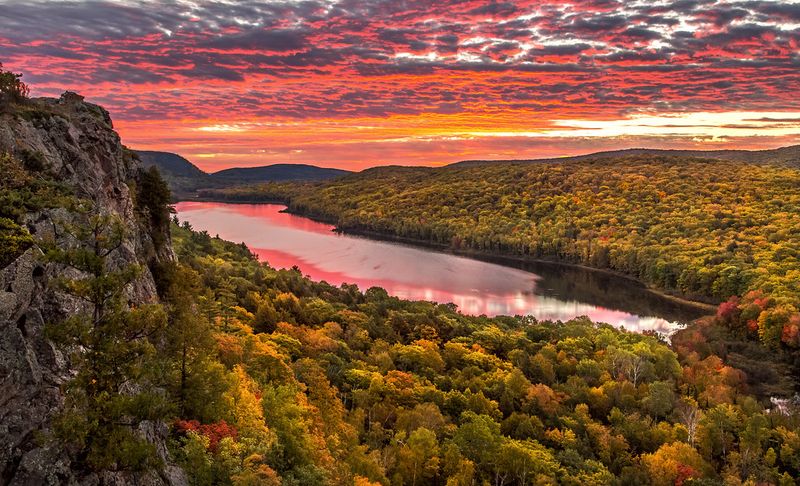
Old-growth forest blankets ancient mountains in Michigan’s remote Upper Peninsula, creating a wilderness playground locals affectionately call “the Porkies.” Lake of the Clouds, the park’s crown jewel, sits in a mountain valley with stunning views from the escarpment above, especially during peak fall color. Nearly 90 miles of rugged hiking trails traverse terrain ranging from gentle lakeshores to challenging ridge climbs. Backpackers discover solitude at remote campsites along Lake Superior’s wild shoreline or beside secluded interior lakes. The Presque Isle River carves through black volcanic rock at the park’s western edge, creating a series of dramatic waterfalls. Winter transforms the landscape into a snow-covered paradise for cross-country skiing and snowshoeing. Did you know? The Porkies contain the largest tract of old-growth northern hardwood forest in North America, with sugar maple trees over 300 years old.
13. Humboldt Redwoods State Park – California

Ancient giants reach for the sky in this cathedral of trees containing the world’s largest remaining old-growth redwood forest. Driving the Avenue of the Giants, a 32-mile scenic route parallel to Highway 101, visitors crane their necks trying to glimpse the tops of these 300+ foot titans. Founders Grove honors the conservationists who saved these trees from logging. The fallen Dyerville Giant, once standing 362 feet tall and over 1,600 years old, crashed to the forest floor in 1991 with a sound like a train wreck that was heard a mile away. Sunlight filters through the dense canopy, creating ethereal beams that illuminate ferns and sorrel carpeting the forest floor. The South Fork of the Eel River provides swimming holes for cooling off on summer days. Winter brings peaceful solitude and magical misty mornings when fog weaves between the massive trunks.
14. Cayo Costa State Park – Florida
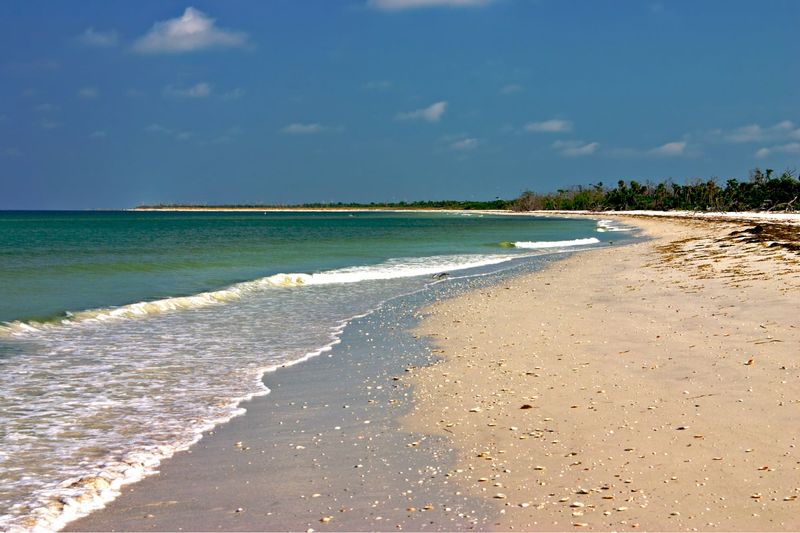
Accessible only by boat, this barrier island paradise preserves nine miles of pristine Gulf Coast beaches unmarred by development. Shells crunch underfoot along shorelines where loggerhead turtles nest and dolphins play in turquoise waters just offshore. Primitive cabins and campsites offer rare opportunities to experience a night under the stars on a nearly deserted tropical island. Interior trails wind through pine forests, oak-palm hammocks, and mangrove swamps teeming with wildlife like gopher tortoises, raccoons, and numerous bird species. Once home to fishing communities of Calusa Native Americans and later Cuban fishermen, the island retains a wild character increasingly rare in Florida. The ferry ride from Pine Island adds to the adventure, creating a true sense of leaving civilization behind. Kayakers paddle through protected bays and mangrove tunnels, spotting manatees and rays in the clear shallow waters.
15. Gooseberry Falls State Park – Minnesota
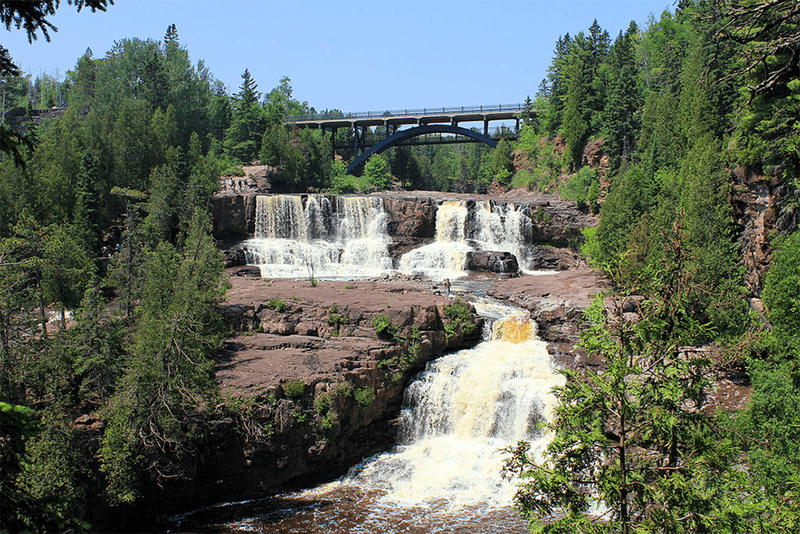
Five distinct waterfalls cascade over ancient lava flows along the Gooseberry River before emptying into the vast expanse of Lake Superior. The Upper, Middle, and Lower Falls create a stair-step effect through a dramatic gorge, with Middle Falls being the most photographed spot in the park. The rocky shoreline of Lake Superior offers a striking contrast to the forested river valley. Smooth pink rhyolite and black basalt stones, polished by powerful waves, create a colorful beach where visitors skip rocks into the largest freshwater lake in the world. The historic stone and log buildings constructed by the Civilian Conservation Corps in the 1930s add rustic charm to the landscape. In winter, frozen waterfalls transform into massive ice sculptures, drawing ice climbers and photographers. The park serves as a gateway to the famous Superior Hiking Trail, which stretches 310 miles along Minnesota’s North Shore.

